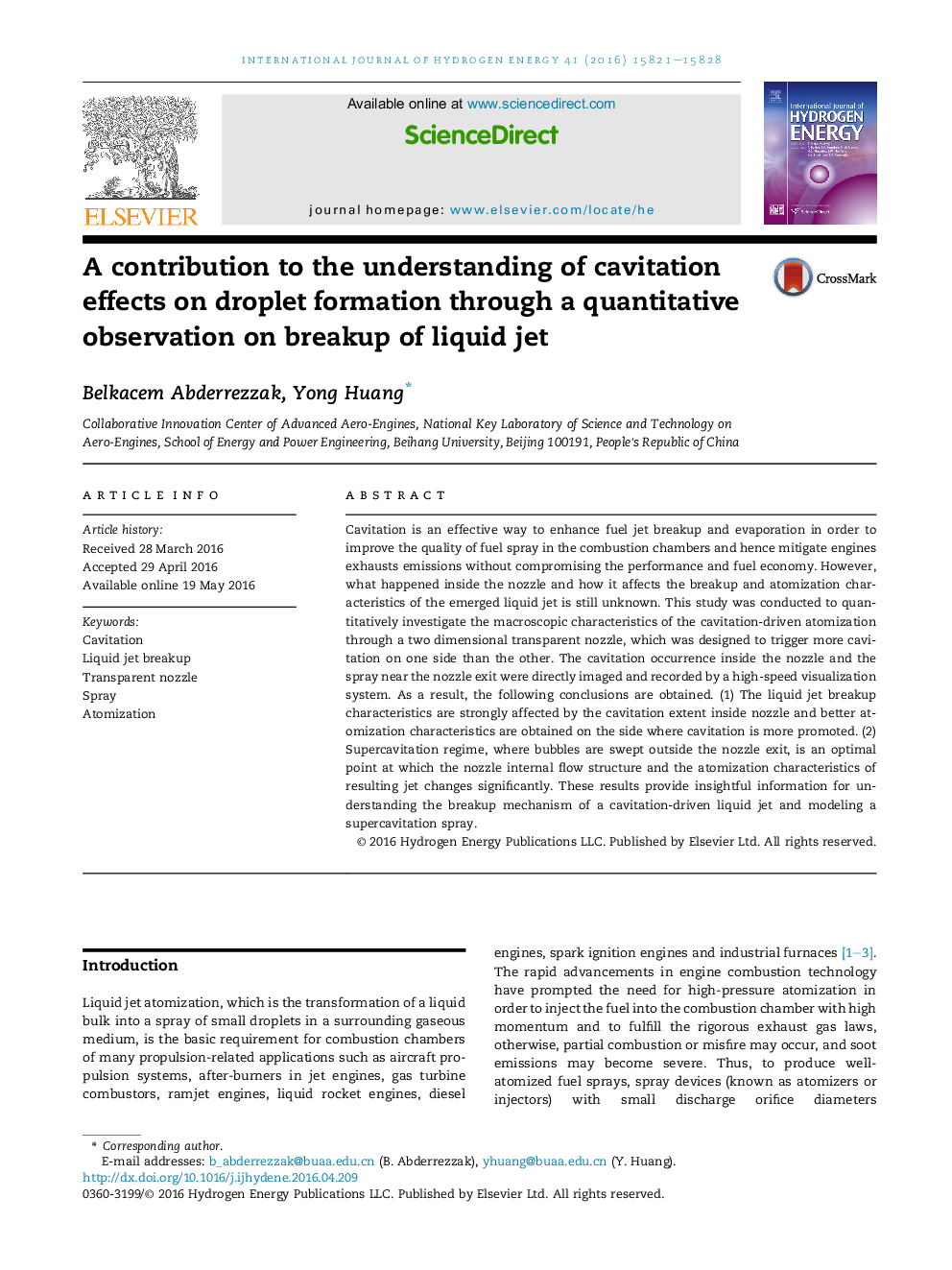| Article ID | Journal | Published Year | Pages | File Type |
|---|---|---|---|---|
| 1270309 | International Journal of Hydrogen Energy | 2016 | 8 Pages |
Cavitation is an effective way to enhance fuel jet breakup and evaporation in order to improve the quality of fuel spray in the combustion chambers and hence mitigate engines exhausts emissions without compromising the performance and fuel economy. However, what happened inside the nozzle and how it affects the breakup and atomization characteristics of the emerged liquid jet is still unknown. This study was conducted to quantitatively investigate the macroscopic characteristics of the cavitation-driven atomization through a two dimensional transparent nozzle, which was designed to trigger more cavitation on one side than the other. The cavitation occurrence inside the nozzle and the spray near the nozzle exit were directly imaged and recorded by a high-speed visualization system. As a result, the following conclusions are obtained. (1) The liquid jet breakup characteristics are strongly affected by the cavitation extent inside nozzle and better atomization characteristics are obtained on the side where cavitation is more promoted. (2) Supercavitation regime, where bubbles are swept outside the nozzle exit, is an optimal point at which the nozzle internal flow structure and the atomization characteristics of resulting jet changes significantly. These results provide insightful information for understanding the breakup mechanism of a cavitation-driven liquid jet and modeling a supercavitation spray.
